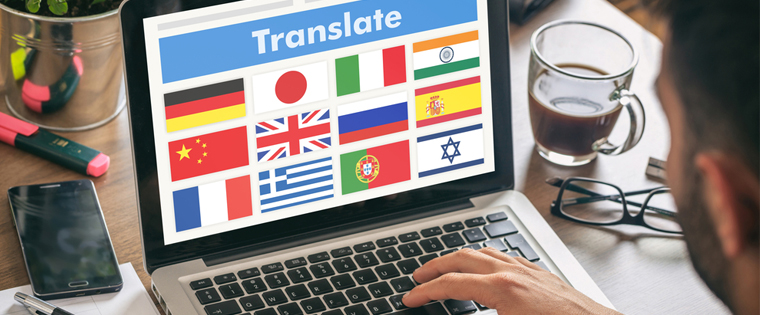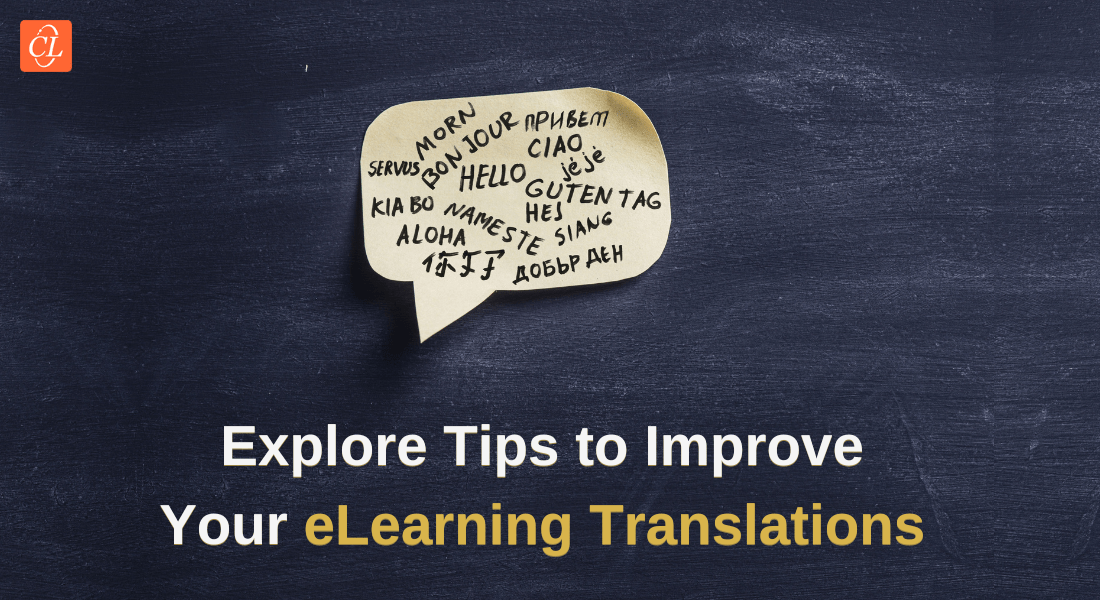Tips & Tricks to Create Translation Friendly eLearning Content – Part 1
This blog will talk about the measures to be taken for writing e-learning course content that are going to be translated in the near future.

Fortune 500 companies get their 40% revenues from international markets. According to a Harvard Business Review, more than half of Google’s revenue (57%) now comes from outside the United States. Apple has a similar split, with 60% of its 2014 fourth-quarter revenue accounted for by international markets.
In this context, translation of employee training programs has become inevitable, as companies spread their businesses to international markets. Creating translation-friendly online learning is the key to reaching your workforce that is spread across the globe. Here, I share five measures to be taken for writing eLearning course content that’s going to be translated. In the second part, I will come up with some more tips & tricks.
1. Use Simple and Short Sentences
You have to write simple, short and succinct sentences. Stick to one thought or idea per sentence. Don’t use figurative language that confuses translators. Smaller sentences are easier to translate than complex, lengthy sentences. Concise sentences help translators finish their work fast and with greater accuracy. Long sentences, with 2 or 3 ideas separated with commas and semicolons, will confuse your learners.
To make sentences translation-friendly, reduce their length to 12-15 words. Break lengthy text strings to simplify the translator’s job and avoid confusion. Writing in the active voice and following the subject-verb-object order in sentences, help your learners understand the content better. Avoiding modifiers will also simplify your sentences and make them translation-friendly.
2. Avoid Idioms and Dialects
Using straight and literal language without idioms and dialects go a long way in producing translation-friendly e-learning content. When you use idioms, translators may not find exact equivalent words in the target language.
For example, a literal translation of the idiomatic expression ‘hold your tongue’ into Hindi does not convey the intended meaning.
So, it’s better to avoid idioms and slangs for creating translation-friendly eLearning content.
3. Maintain Consistency in Explaining Concepts
Maintaining consistent style in language and using the same terminology to describe similar concepts make your online learning content translation-friendly. Using synonyms in the name of avoiding repetition won’t work in translation, but leads to chaos and mistranslation. If you use many words that convey same meaning, it leads to higher expenditure, as translation costs function on word count.
Most translators use computer-aided translation tools to render the content in the target language. These tools come with built-in databases or ‘memories’ which store words already translated. When you use the same words in your online course content, the tools refer their memories and ‘pull’ their translated words, thereby reducing costs.
Want to deliver localized training to your globally spread employees? Check our ultimate guide.
4. Be Careful with Symbols and Signs
No doubt that symbols and images convey the intended message very well, but they are interpreted differently, by people belonging to different cultures.
For example, the ‘thumbs-up’ sign denotes well done and agreement in the Western culture, but is considered insulting in the Middle East.
Another classic example of symbols being misinterpreted is the sign used to indicate the word ‘OK’. In countries like Germany, Russia, and Brazil, the sign represents private bodily orifice. In Japan, the word signifies money, while in France it is used to indicate the digit zero.
So, it’s better to be cautious while using images, symbols or signs in the “original” English course that’s going to be translated later for a global audience.
5. Beware of the Direct Usage of Acronyms
In some cases, your translators may not be familiar with the industry jargon, so it’s better not to use acronyms and abbreviations.
If you can’t avoid the use of acronyms and abbreviations, indicate their expanded forms one or two times in the content and then go with the short forms. In that way, translators can easily understand what you are talking or mentioning in the online learning course.
Making your eLearning content translation-friendly will save your money, avoid rework, and prevent misinterpretation. So, start preparing your translation-friendly online learning content by focusing on the aspects discussed above. I shall meet you next week with some more tips & tricks. Stay tuned!





